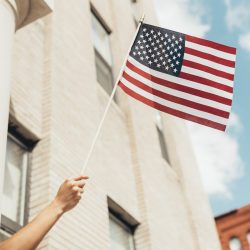
Determining the right kind of visa for you can be challenging. While the variety of visas available makes it so that a diverse range of applicants have the opportunity to apply for U.S. visas, this variety is also somewhat confusing. And applying for the right visa is crucial to maximizing your chances to come to the United States. To help you figure out which visa you might be eligible for, we’ve taken a close look at who the L-1 visa and the H-1B visa are intended to assist.
Similarities and Differences Between the L-1 and H-1B Visas
Using U.S. Citizenship and Immigration Service’s program descriptions, it is possible to make a comparison of the qualities of each visa. Both the L-1 and H-1B visas are for foreign workers with specific skills or knowledge with employers who wish for them to come to the United States. Both are temporary work visas, and both are dual intent (meaning that the visa holder can apply for permanent resident without losing their visa-related status). And with both visas, a relationship with a specific employer is required, and it is the employer who petitions on behalf of the worker. However, they differ in terms of the location of the employer and whether the employee is coming to an established office location or for the purpose of establishing one themselves.
The L-1 visa is for workers in managerial and executive positions or with “specialized knowledge” employed by a foreign company who will be transferring to or establishing an affiliated U.S. office. The H-1B visa is primarily for foreign workers in specialty occupations who are planning to come to work for a U.S. employer.
Both are temporary work visas, and both are dual intent (meaning that the visa holder can apply for permanent resident without losing their visa-related status). And with both visas, a relationship with a specific employer is required, and it is the employer who petitions on behalf of the worker. However, they differ in terms of the location of the employer and whether the employee is coming to an established office location or for the purpose of establishing one themselves. The L-1 visa is for workers in managerial and executive positions or with “specialized knowledge” employed by a foreign company who will be transferring to or establishing an affiliated U.S. office. The H-1B visa is primarily for foreign workers in specialty occupations who are planning to come to work for a U.S. employer.
Furthermore, only the H-1B visa has a cap (discussed in detail below) and requires a Labor Condition Application showing that U.S. workers are unavailable. The L-1 visa also does not have the same educational requirements as the H-1B (for details, see below).
To help you understand each of these visas more thoroughly, here is a more in-depth summary of the requirements for the L-1 and H-1B visas.
L-1 Visa
According to U.S. Citizenship and Immigration Services (USCIS), the L-1 visa is for managers, executives, and workers with “specialized knowledge” who are employed by a foreign business entity and will be opening a new office location for that company in the United States. The employee must have been working abroad for at least one continuous year within the last three, and the company they work for now must be connected through a qualifying corporate relationship to the business they intend to transfer to or establish in the United States. Furthermore, if the employee will be requesting an extension of stay, the U.S. company must also be “active and operating” and be able to “support a managerial or executive position” (in other words, the employee’s role must still be supported by the U.S. company) within a year after the employee’s arrival in the United States through the L-1 visa.
H-1B Visa
According to U.S. Citizenship and Immigration Services (USCIS), the H-1B visa is for individuals working in a “specialty occupation” with an employer-employee relationship with a U.S. employer. To qualify as working in a specialty occupation, a job must require a minimum of a bachelor’s degree or the equivalent of one, and the job must be related to the individual’s field of study. The individual must also be able to show that they will be paid an appropriate wage, the “actual or prevailing wage” for the occupation in question.
Sometimes, an individual who owns their own business may qualify for an H-1B visa if there is evidence that “the petitioning entity has the right to control the beneficiary’s employment.” A board of directors, preferred stakeholders, investors, or some other entity may have the right to control the applicant’s employment.
There is a cap of 65,000 H-1B visas per fiscal year. The fiscal year begins October 1, and the cap fills up quickly, so USCIS recommends planning ahead. A few exceptions are worth noting: the first 20,000 petitions for individuals with U.S. masters degrees (or higher) are not subject to this cap; nor are applicants “petitioned for or employed at an institution of higher education (or its affiliated or related nonprofit entities), a nonprofit research organization, or a government research organization.”
We Can Help with Your Visa Application
Are you interested in immigrating to the U.S. or moving to Canada? Contact VisaPlace today.
All our cases are handled by competent and experienced immigration professionals who are affiliated with VisaPlace. These professionals consist of lawyers, licensed paralegals and consultants who work for Niren and Associates an award winning immigration firm that adheres to the highest standards of client service.
Click here to book a consultation with an immigration professional or fill out our FREE assessment and we will get back to you within 24 hours.






